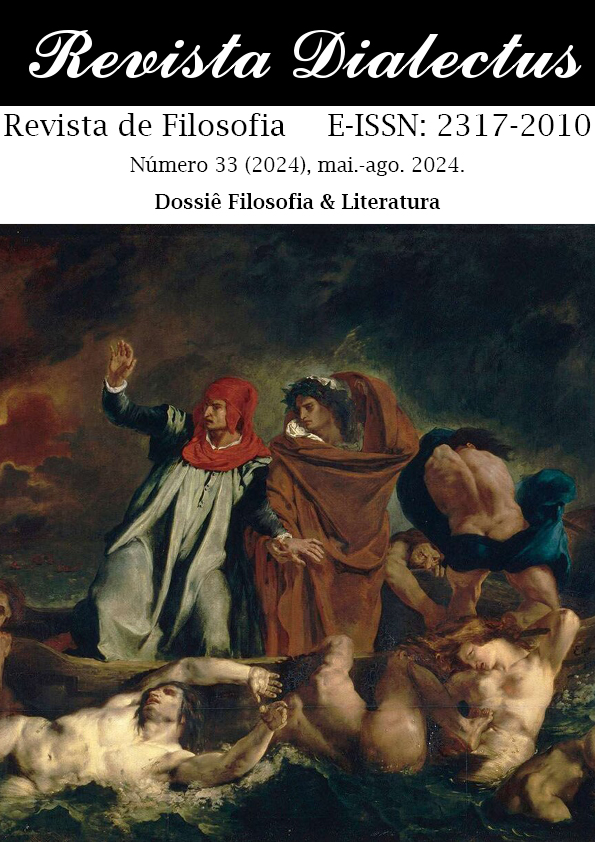A DUALIDADE DO MEDO DE MEDEIA NA TRAGÉDIA DE SÊNECA
DOI:
https://doi.org/10.30611/33n33id94050Keywords:
Medeia, Sêneca, tragédia, medo, dualidadeAbstract
A peça trágica, Medeia, é uma das maiores criações de Sêneca. É notável que Medeia tivesse empreendido uma luta interna para manter-se fiel ao seu passado de crimes, pois pretendeu exacerbar seu lado criminoso e, por fim, acabou travando uma batalha com sua própria consciência. No decorrer da peça, invocou até mesmo o universo, solicitando vingança à sua dor; entretanto, ela é mãe, revestida, internamente, de um “medo feminino”. Pretende-se apresentar, neste estudo, de que forma Medeia empreende tal luta interna para arrancar do peito esse sentimento e desvencilhar-se do medo feminino a ponto de tornar-se “inumana” e matar os próprios filhos.
References
DUPONT, F. Le théâtre latin. Paris: A. Colin, 1988.
FREITAS, Renata Cazarini de. Cuncta Quatiam – Medeia abala estruturas. O teatro de Sêneca e sua permanência na cena contemporânea: tradução e recepção. 2015 (Dissertação de Mestrado).
HERRMANN, L. Le théâtre de Séneque. Paris: Les Belles Lettres, 1924.
NOVAK. Maria da Glória. Medeia de Sêneca. Letras Clássicas, n. 3, p. 147-162, 1999.
PRADO, João Batista Toledo et alii. A reatualização do mito de Medeia em Eurípides, Ovídio e Sêneca. Revista Intertexto. 2021.
SÉNÈQUE. Tragédies tome. I. Paris: Les Belles Lettres, 1964.
Downloads
Published
Issue
Section
License
Copyright (c) 2024 Elaine Cristina Prado dos Santos

This work is licensed under a Creative Commons Attribution-NonCommercial-NoDerivatives 4.0 International License.
Authors who publish in this journal agree to the following terms:
- Authors retain the copyright and grant the journal the right of first publication, with the work simultaneously licensed under the Attribution-NonCommercial-NoDerivatives 4.0 International (CC BY-NC-ND 4.0) License, which allows the non-commercial sharing of work, without modifications and with acknowledgment of authorship and initial publication in this journal.
- Authors are authorized to take additional contracts separately, for non-exclusive distribution of the version of the work published in this journal (eg publish in institutional repository or as a book chapter), with acknowledgment of authorship and initial publication in this journal.
- Authors are allowed and encouraged to publish and distribute their work online (eg in institutional repositories or on their personal page) at any point before or during the editorial process, as this can generate productive changes as well as increase the impact and citation of published work (See The Free Access Effect).



















